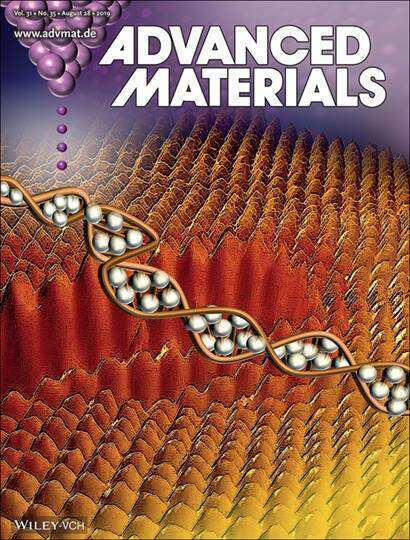
Scanning tunneling microscopy and spectroscopy of novel silver-containing DNA molecules
2Department of Biochemistry and Molecular Biology, Tel Aviv University, Tel Aviv, Israel
The quest for a suitable molecule to pave the way to molecular nano-electronics has been met with obstacles for over a decade. Candidate molecules such as carbon nanotubes lack the appealing trait of self-assembly, while DNA seems to lack the desirable feature of conductivity. Silver-containing poly(dG)-poly(dC) DNA (E-DNA1) molecules emerge as promising candidates for molecular electronics2, owing to the selectivity of their metallization, their thin and uniform structure, their resistance to deformation, and their possible high conductivity. Ultra-high vacuum (UHV) scanning tunneling microscopy (STM) and spectroscopy (STS) of E-DNA reveal a metal-molecule hybrid structure, with a lower energy gap than its DNA-based peers.3 High-resolution morphology characterization of this novel nanostructure indicates silver-embedded DNA, rather than externally coated DNA. The silver-induced electronic levels emerging in E-DNA’s density of states (DOS) point towards enhanced conductivity. The temperature dependence of this DOS leads to the temperature dependent STM apparent height of the molecule – a phenomenon that has not been observed before for other complex nano-structures.4
1 Eidelshtein G, Fardian-Melamed N, Gutkin V, Basmanov D, Klinov, D, Rotem D, Kalisman Y, Porath D, Kotlyar A, Advanced Materials 28, 24 (2016)
2 Zhuravel R†, Stern A†, Fardian-Melamed N†, Eidelshtein G, Katrivas L, Rotem D, Kotlyar A, Porath D, Advanced Materials 30, 41 (2018)
3 Fardian-Melamed N, Eidelshtein G, Rotem D, Kotlyar A, Porath D, Advanced Materials 31, 35 (2019)
4 Fardian-Melamed N, Eidelshtein G, Rotem D, Kotlyar A, Porath D, Small 201905901 (2019)

Powered by Eventact EMS